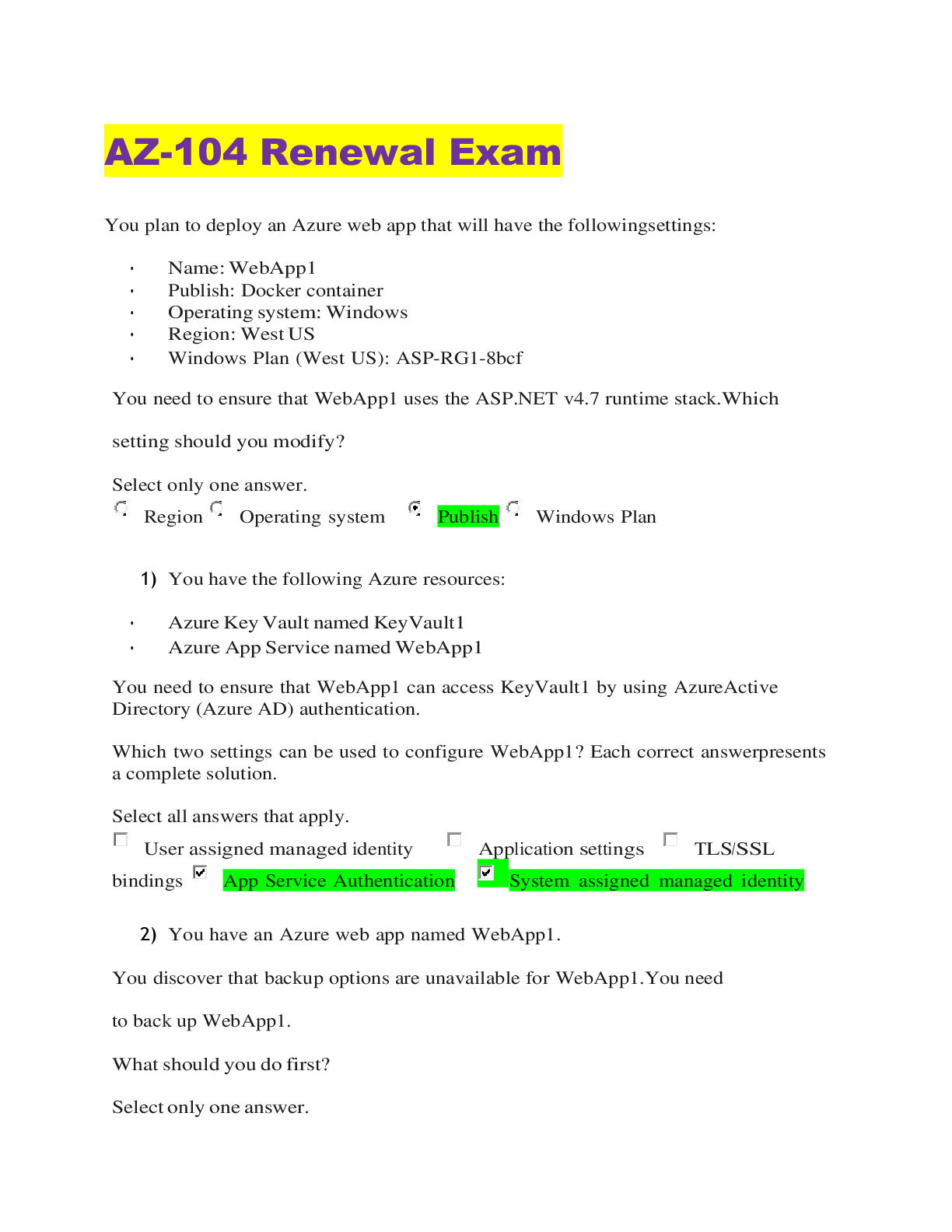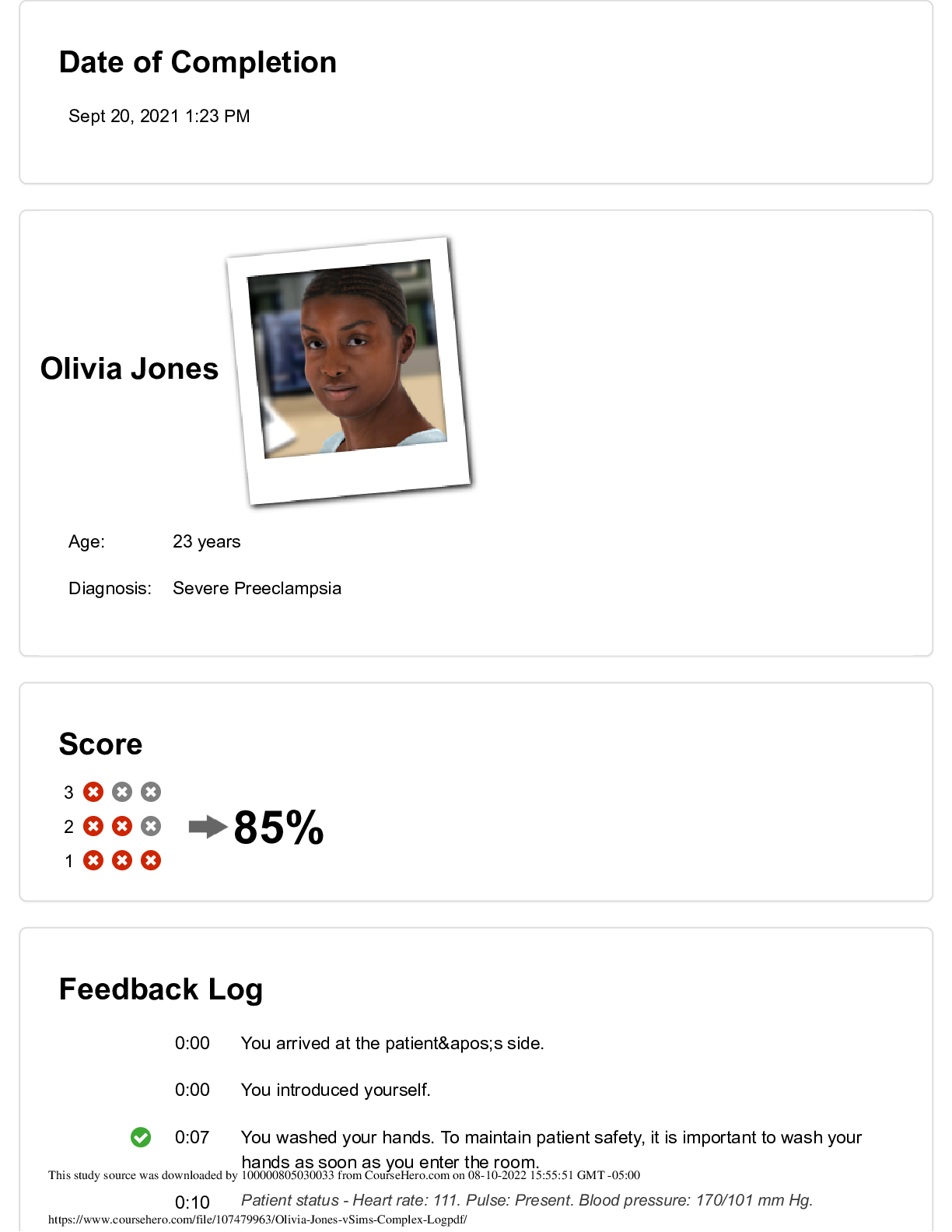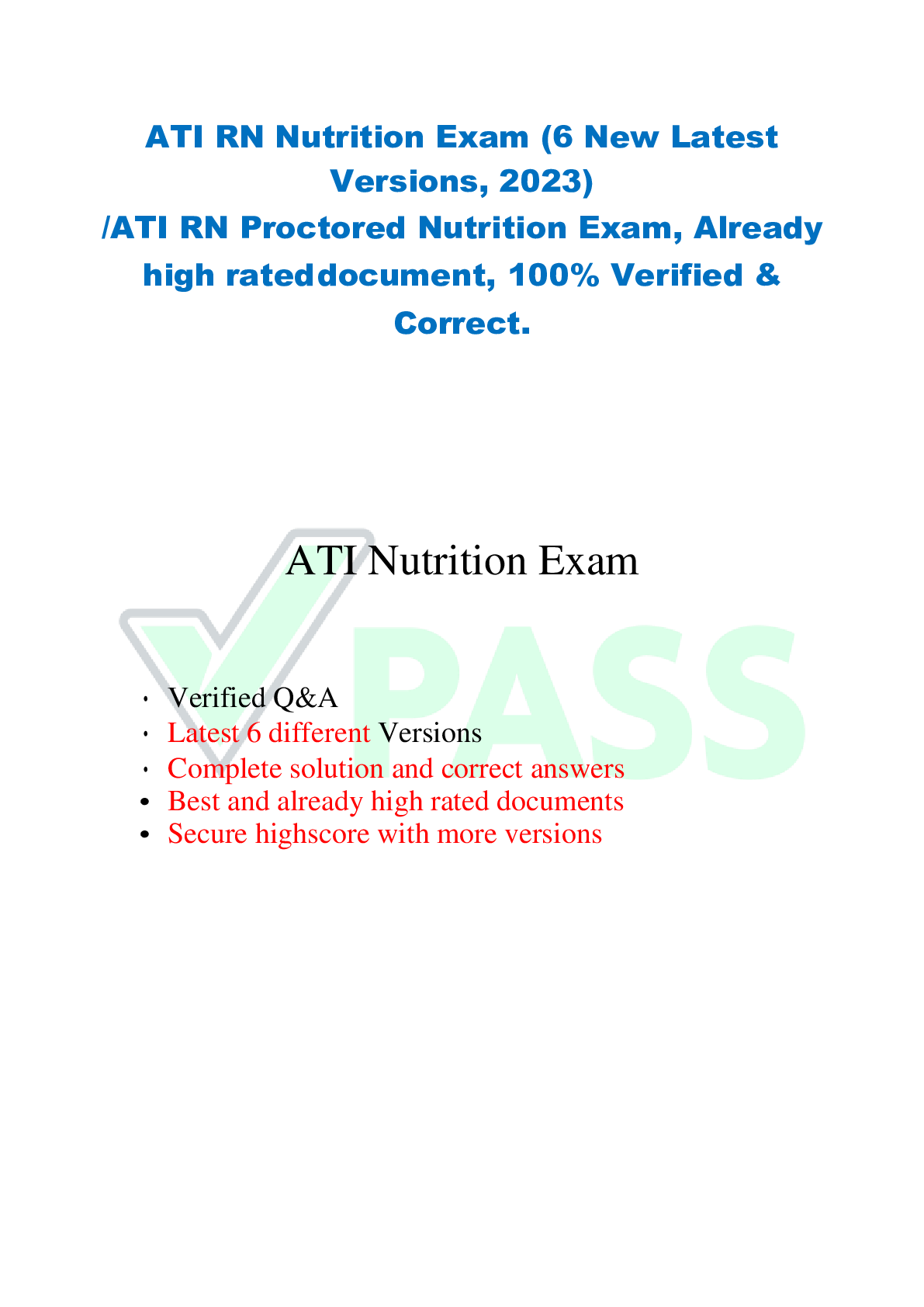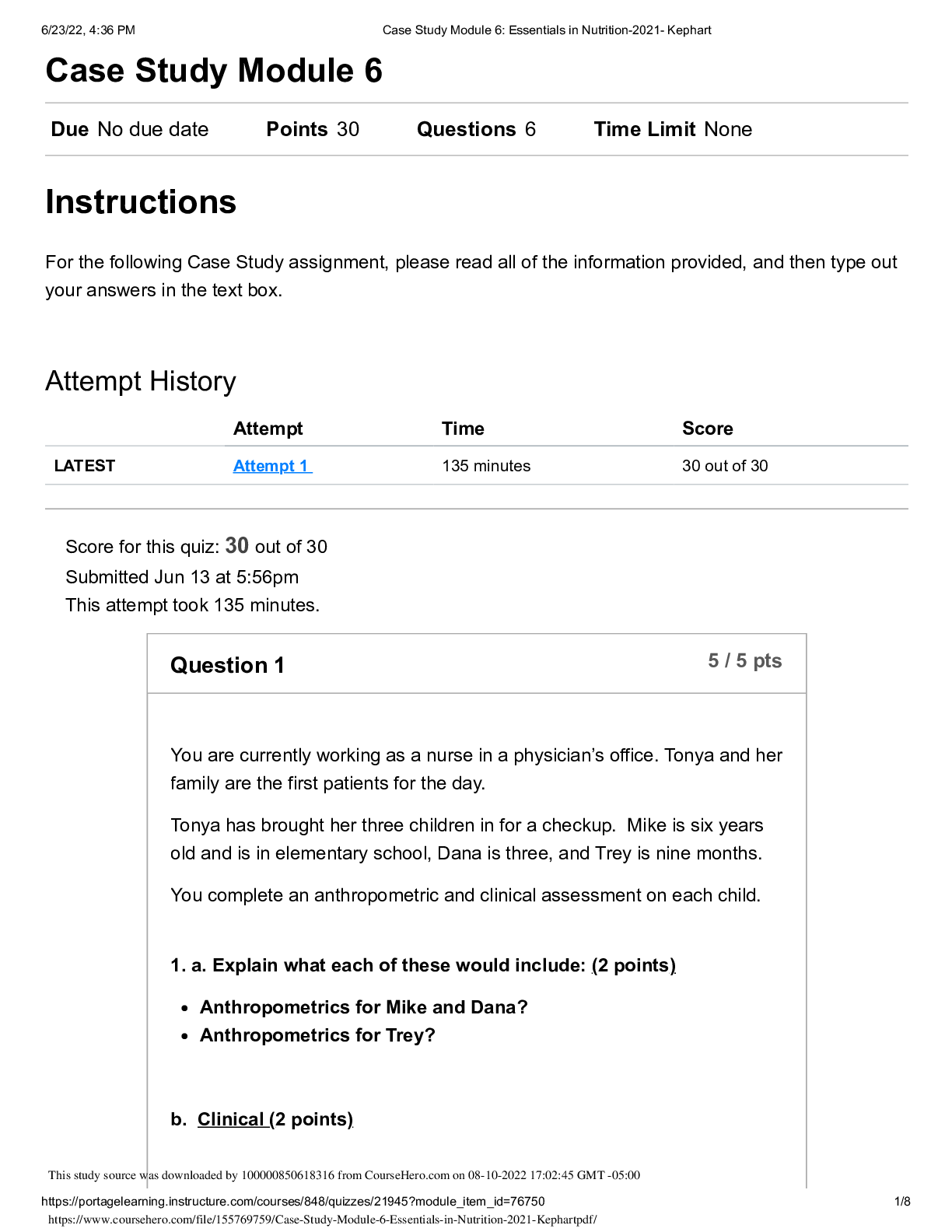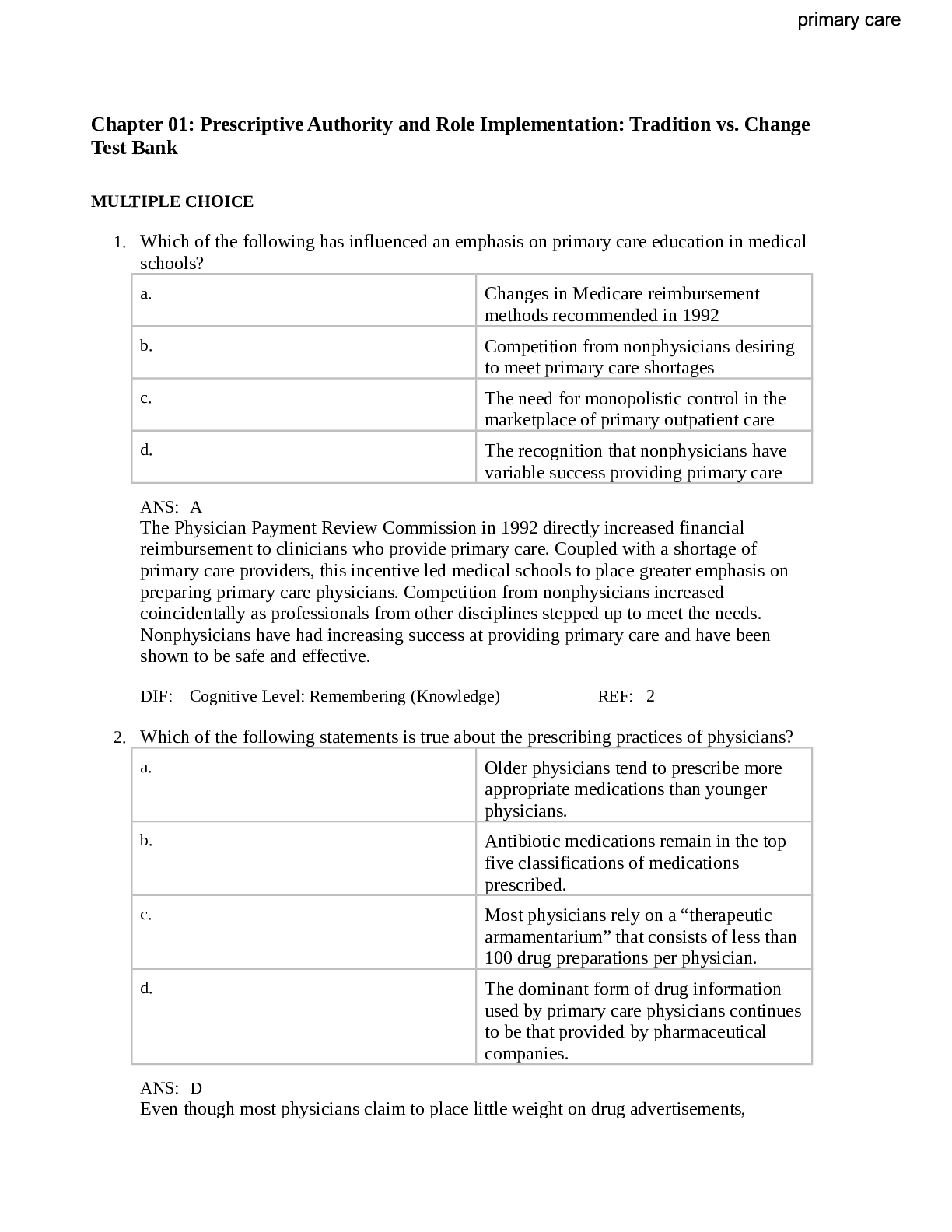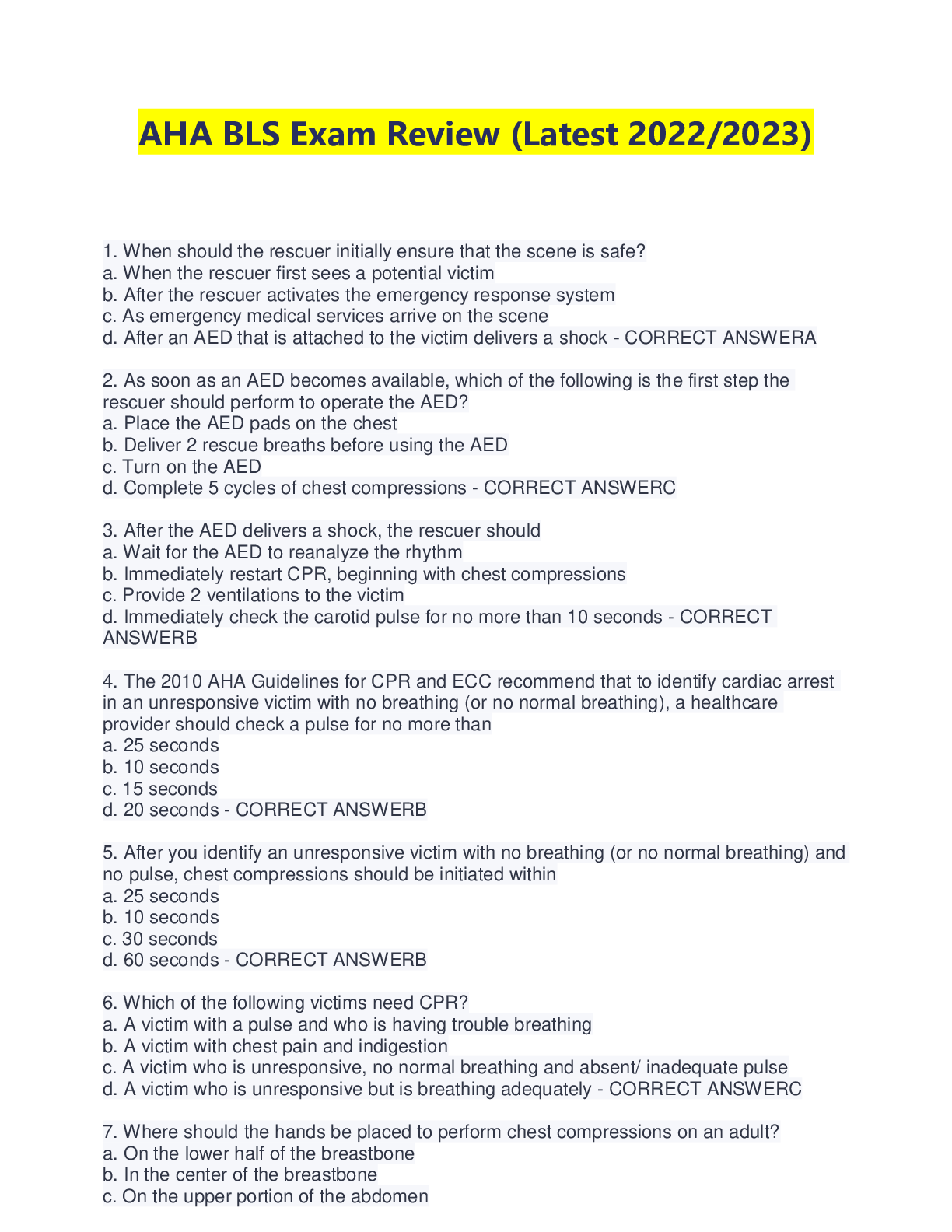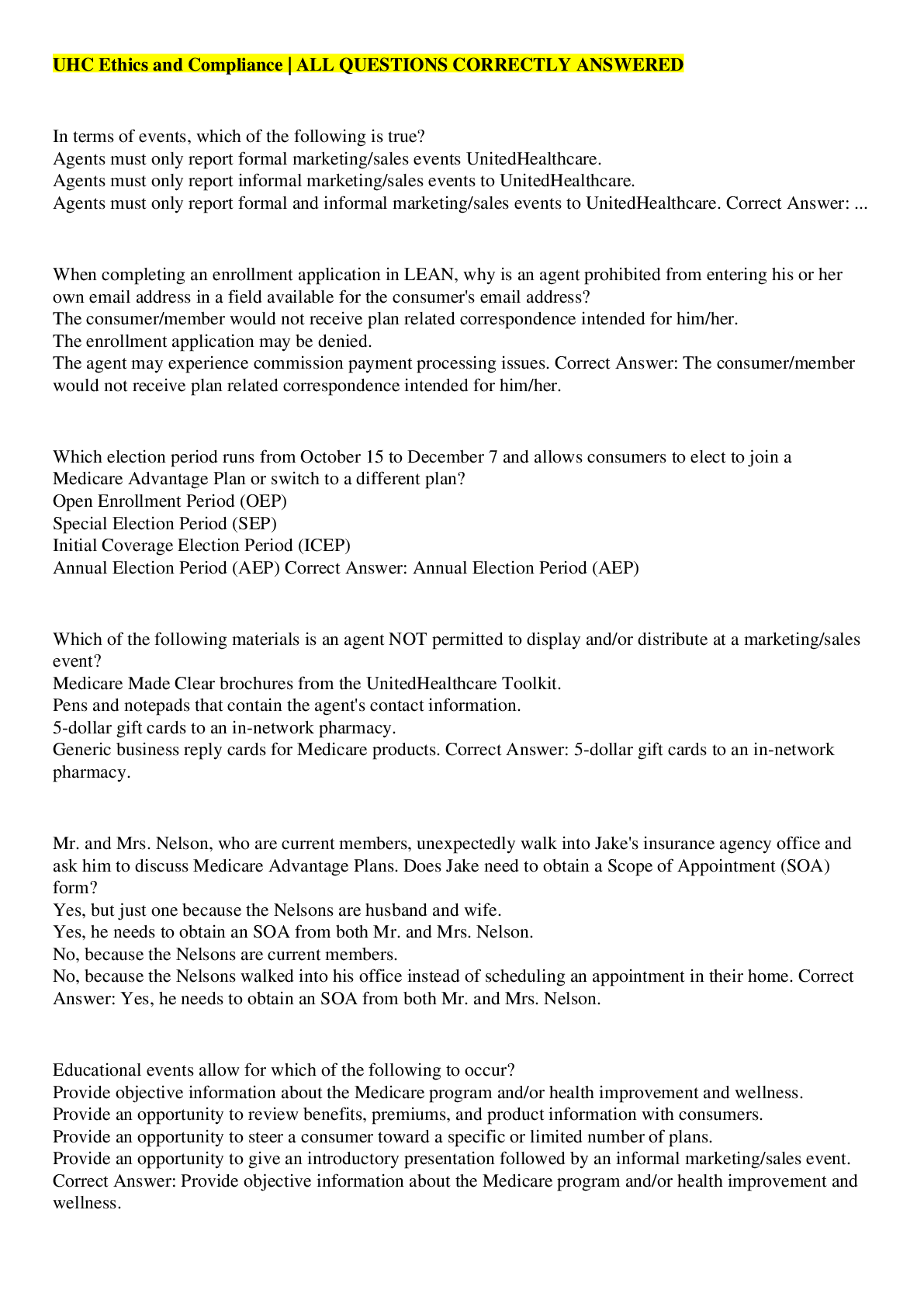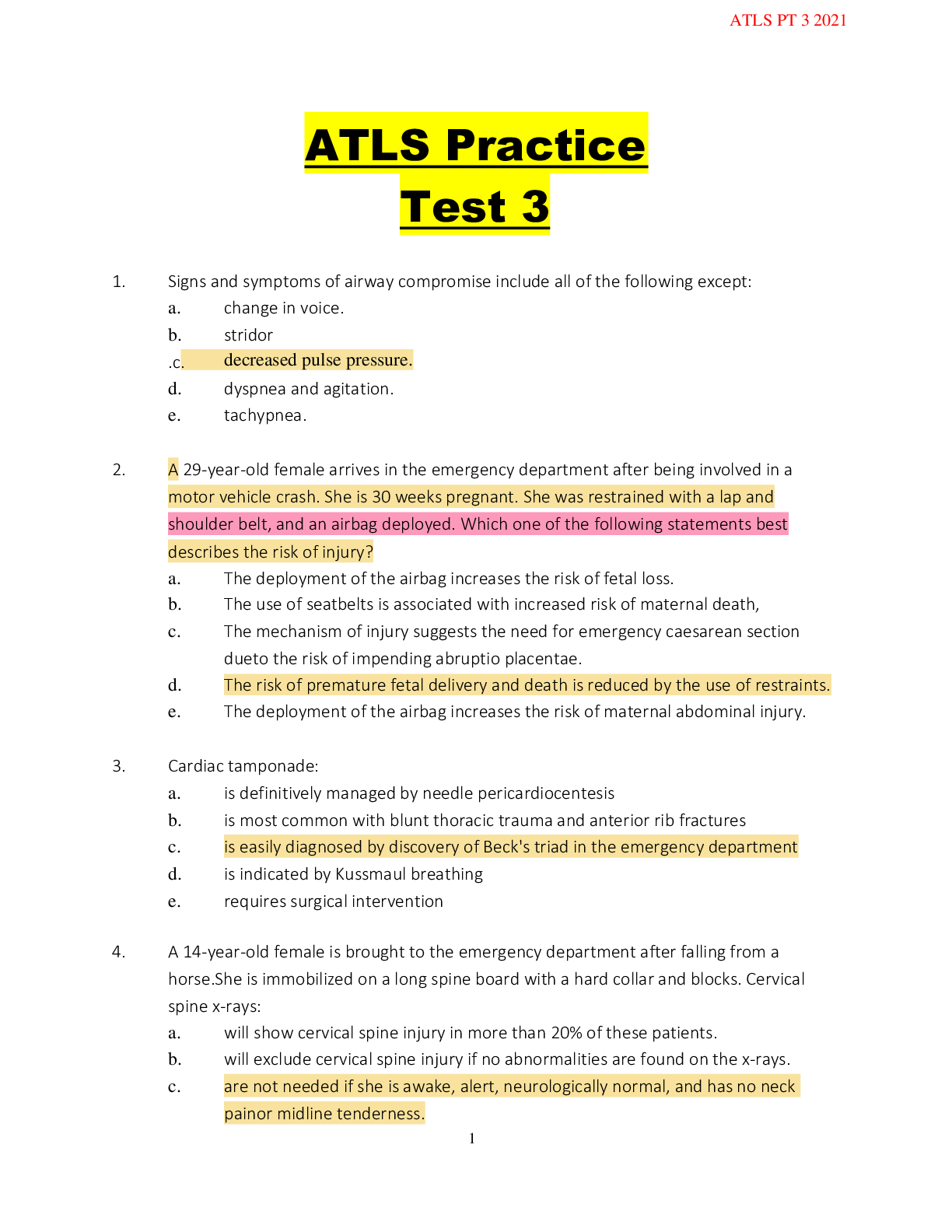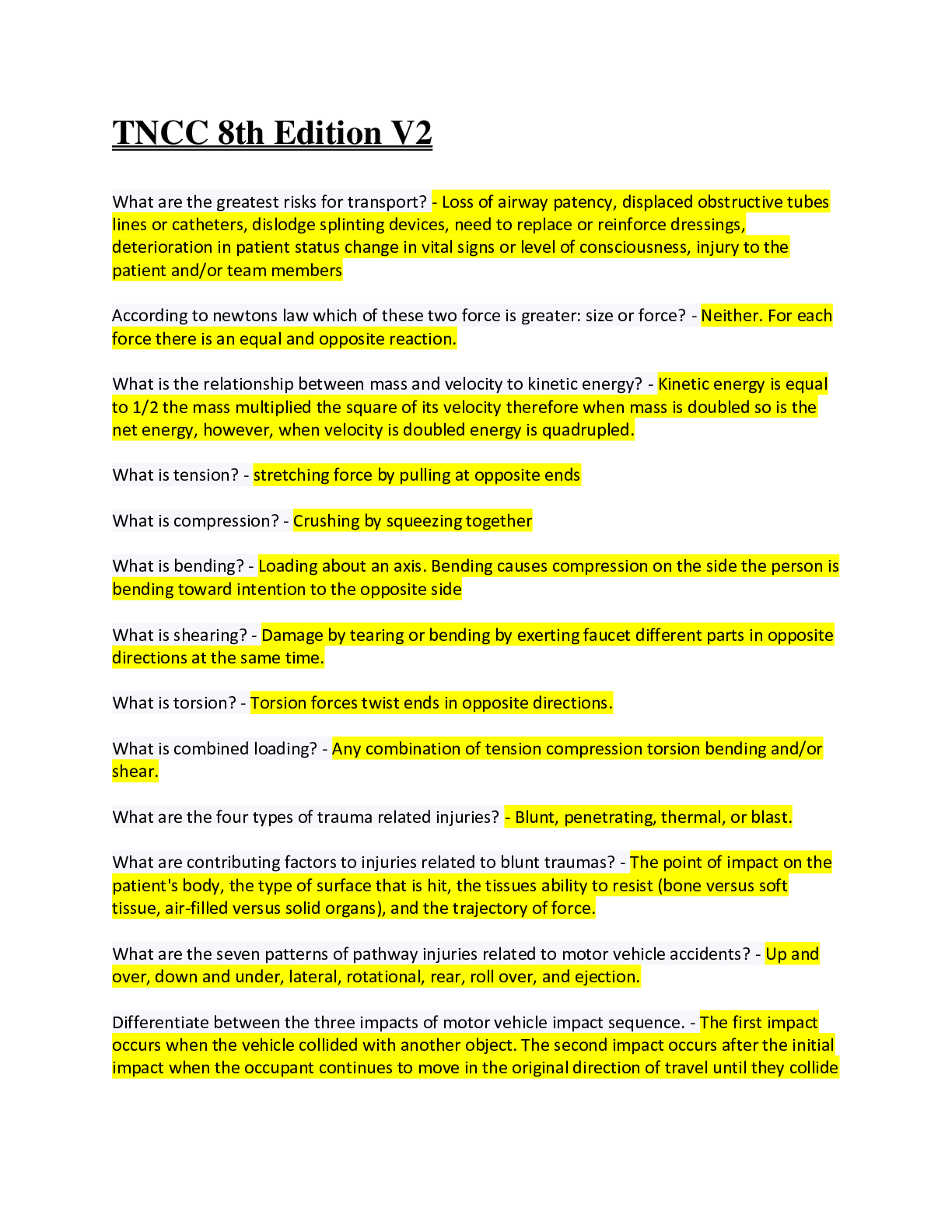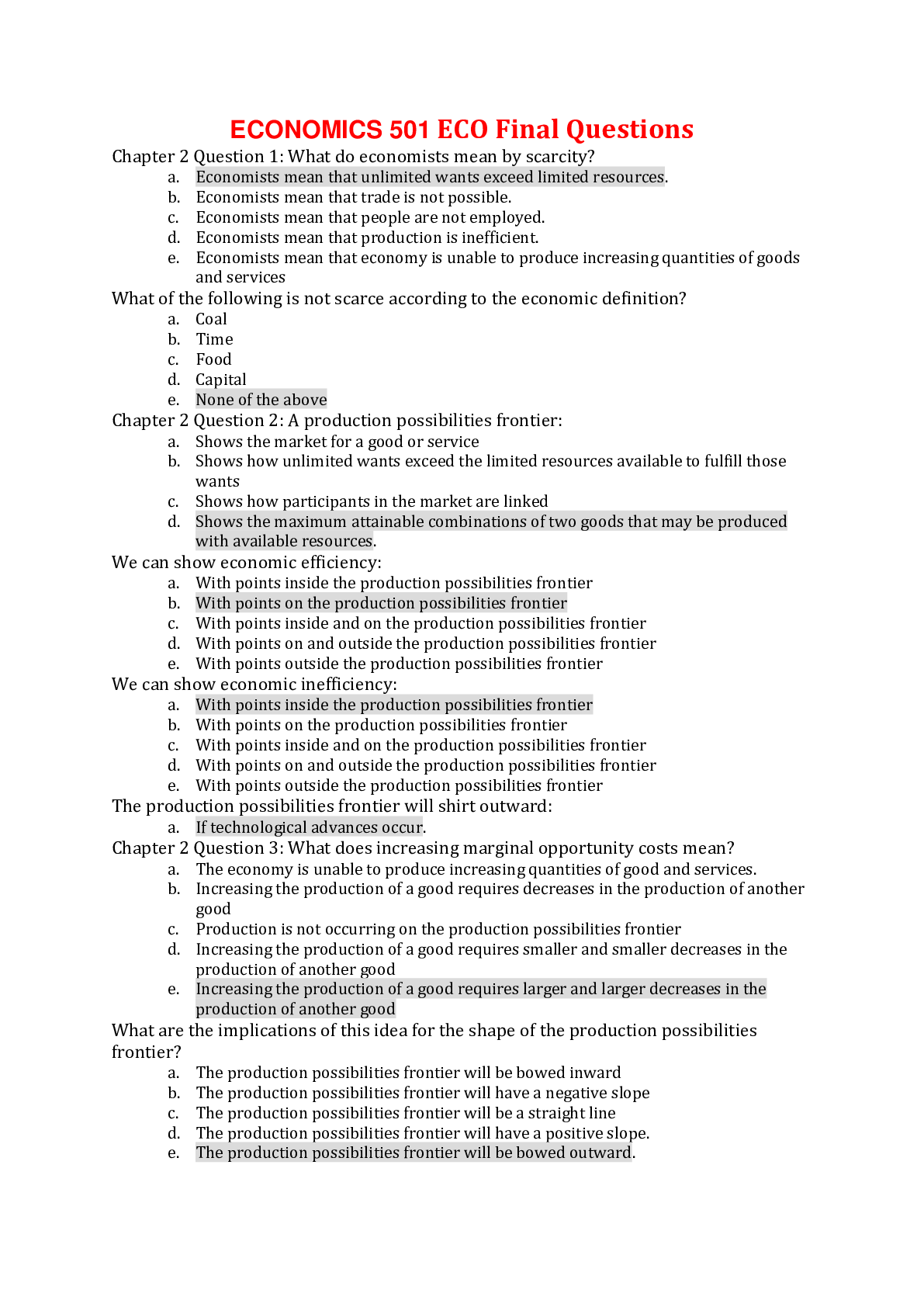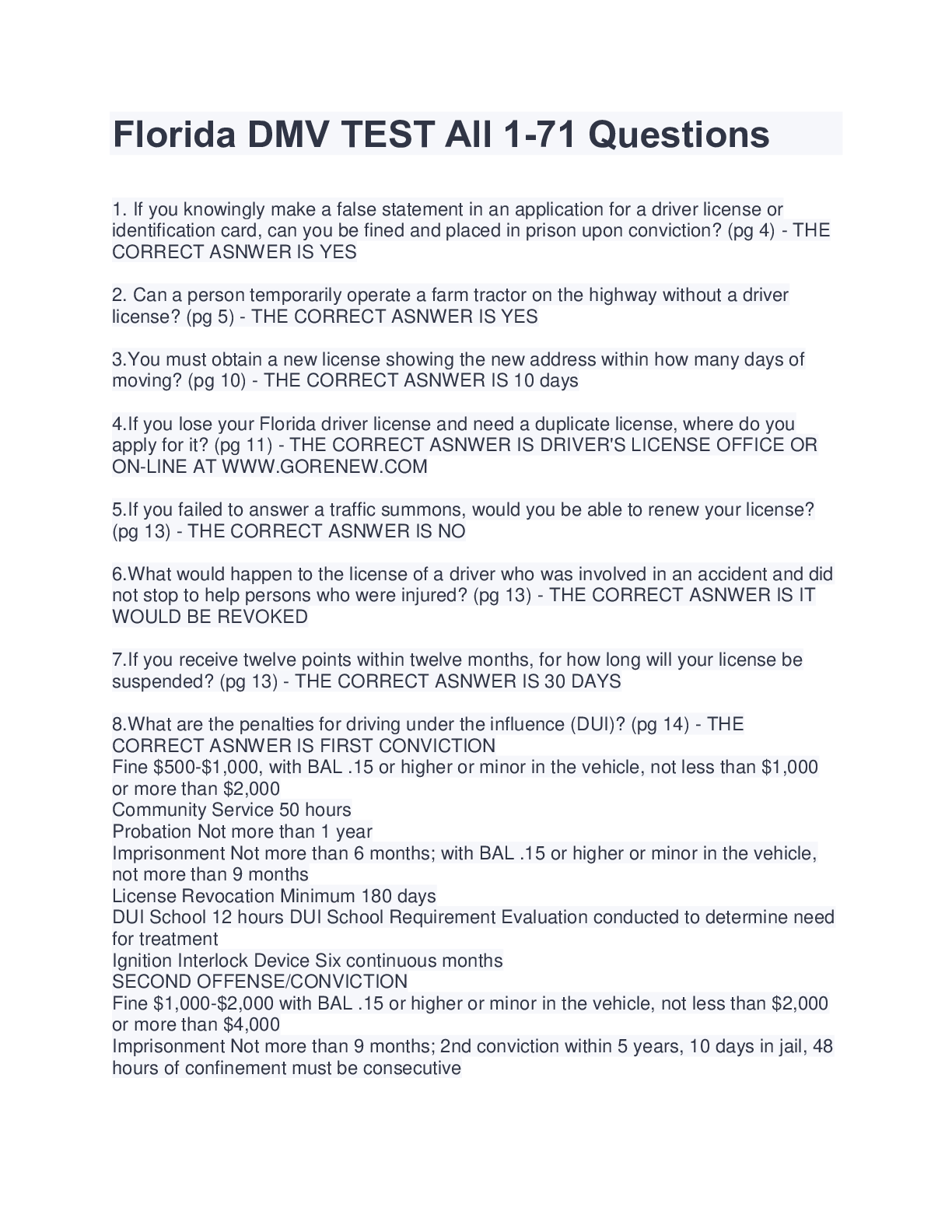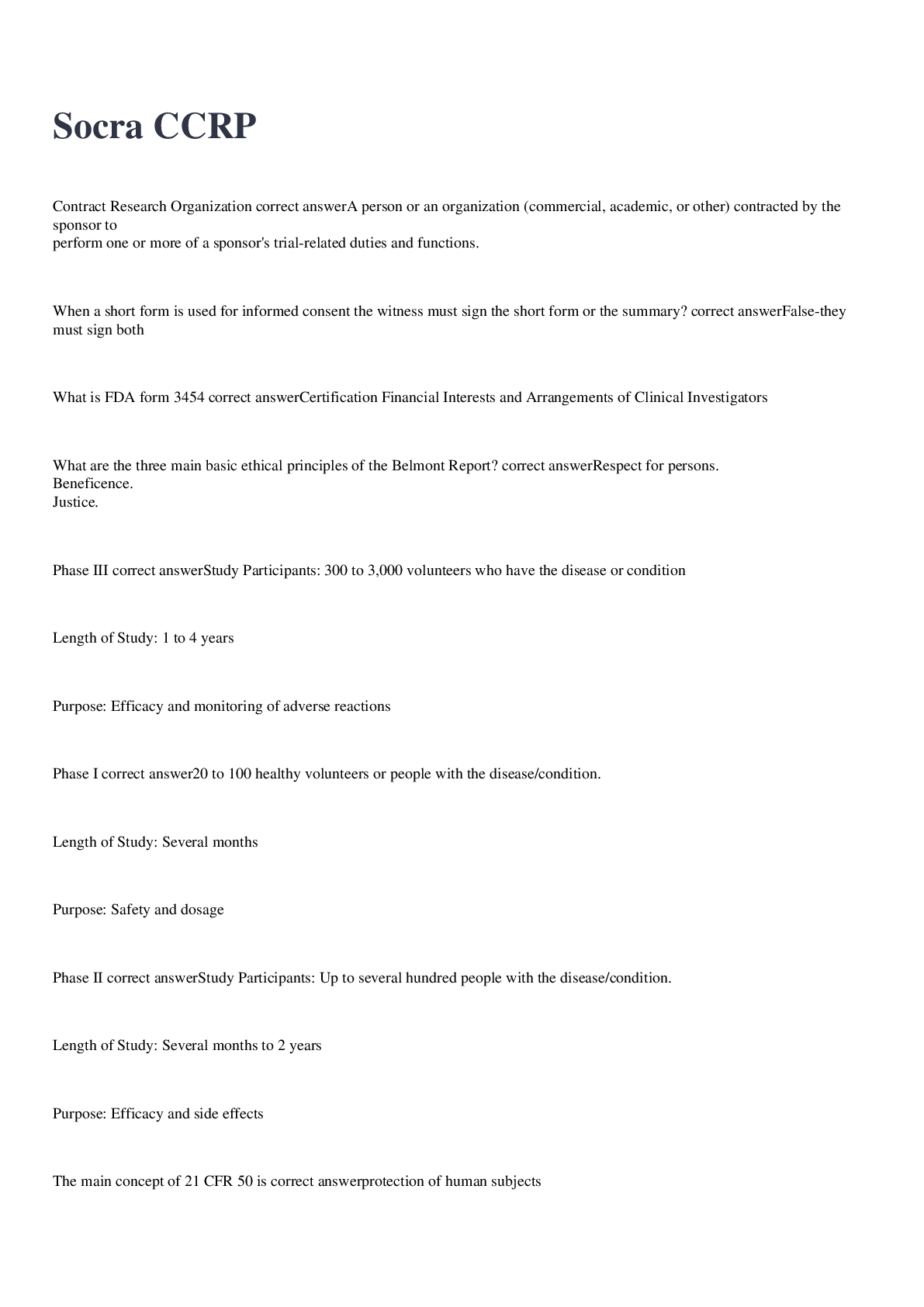ATLS Practice Test 3 (100% Satisfied)
Document Content and Description Below
ATLS Practice Test 3 1. Signs and symptoms of airway compromise include all of the following except: a. change in voice. b. stridor. c. decreased pulse pressure. d. dyspnea and agitation. e. tac... hypnea. 2. A 29yearold female arrives in the emergency department after being involved in a motor vehicle crash. She is 30 weeks pregnant. She was restrained with a lap and shoulder belt, and an airbag deployed. Which one of the following statements best describes the risk of injury? a. The deployment of the airbag increases the risk of fetal loss. b. The use of seatbelts is associated with increased risk of maternal death, c. The mechanism of injury suggests the need for emergency caesarean section due to the risk of impending abruptio placentae. d. The risk of premature fetal delivery and death is reduced by the use of restraints. e. The deployment of the airbag increases the risk of maternal abdominal injury. 3. Cardiac tamponade: a. is definitively managed by needle pericardiocentesis b. is most common with blunt thoracic trauma and anterior rib fractures c. is easily diagnosed by discovery of Beck's triad in the emergency department d. is indicated by Kussmaul breathing e. requires surgical intervention 4. A 14yearold female is brought to the emergency department after falling from a horse. She is immobilized on a long spine board with a hard collar and blocks. Cervical spine xrays: a. will show cervical spine injury in more than 20% of these patients. b. will exclude cervical spine injury if no abnormalities are found on the xrays. c. are not needed if she is awake, alert, neurologically normal, and has no neck pain or midline tenderness. d. should be performed before addressing potential breathing or circulatory problems. e. may show atlantooccipital dislocation if the Power's ratio is < 1. 1 atls.yolasite.com 5. The most specific test to evaluate for injuries of solid abdominal organs is: a. abdominal xrays b. abdominal ultrasonography c. diagnostic peritoneal lavage d. frequent abdominal examinations e. CT of abdomen and pelvis 6. A 40yearold obese patient with a Glasgow Coma Scale score of 8 requires a CT Scan. Before transfer to the scanner, you should: a. give more sedative drugs. b. insert a multilumen esophageal airway. c. insert a definitive airway. d. request a lateral cervical spine film. e. insert a nasogastric tube. 7. A 23yearold construction worker is brought to the emergency department after falling more than 9 meters (30 feet) from scaffolding. His vital signs are: heart rate 140, blood pressure 96/60 mm Hg, and respiratory rate 36. He is complaining bitterly of lower abdominal and lower limb pain, and has obvious deformity of both lower legs with bilateral open tibial fractures. Which one of the following statements concerning this patient is true? a. Pelvic injury can be ruled out based on the mechanism of injury. b. Blood loss from the lower limbs is the most likely cause of his hypotension. c. Xrays of the chest and pelvis are important adjuncts in his initial assessment. d. Spinal cord injury is the most likely cause of his hypotension. e. Aortic injury is the most likely cause of his tachycardia. 8. A 25yearold female in the third trimester of pregnancy is brought to the emergency department following a highspeed motor vehicle crash. She is conscious and immobilized on a long spine board. Her respiratory rate is 24, heart rate is 120, and blood pressure is 70/50. The laboratory results show a PaCO2 of 40 mm Hg. Which one of the following statements concerning this patient is true? a. Fetal assessment should take priority. b. Logrolling the patient to the right will decompress the vena cava. c. Rhimmunoglobulin therapy should be immediately administered. d. The patient likely has impending respiratory failure. e. Vasopressors should be given to the patient. 2 atls.yolasite.com 9. The most important consequence of inadequate organ perfusion is: a. multiple organ failure b. decreased base deficit c. acute glomerulonephritis d. increased cellular adenosine triphosphate (ATP) production e. vasodilation 10. Hypertension following a head injury: a. should be treated to reduce intracranial pressure b. may indicate imminent herniation from critically high intracranial pressure c. indicates preexisting hypertension d. mandates prompt administration of mannitol e. should prompt burr hole drainage of potential subdural hematomas 11. Initial treatment of frostbite inju [Show More]
Last updated: 1 year ago
Preview 1 out of 10 pages
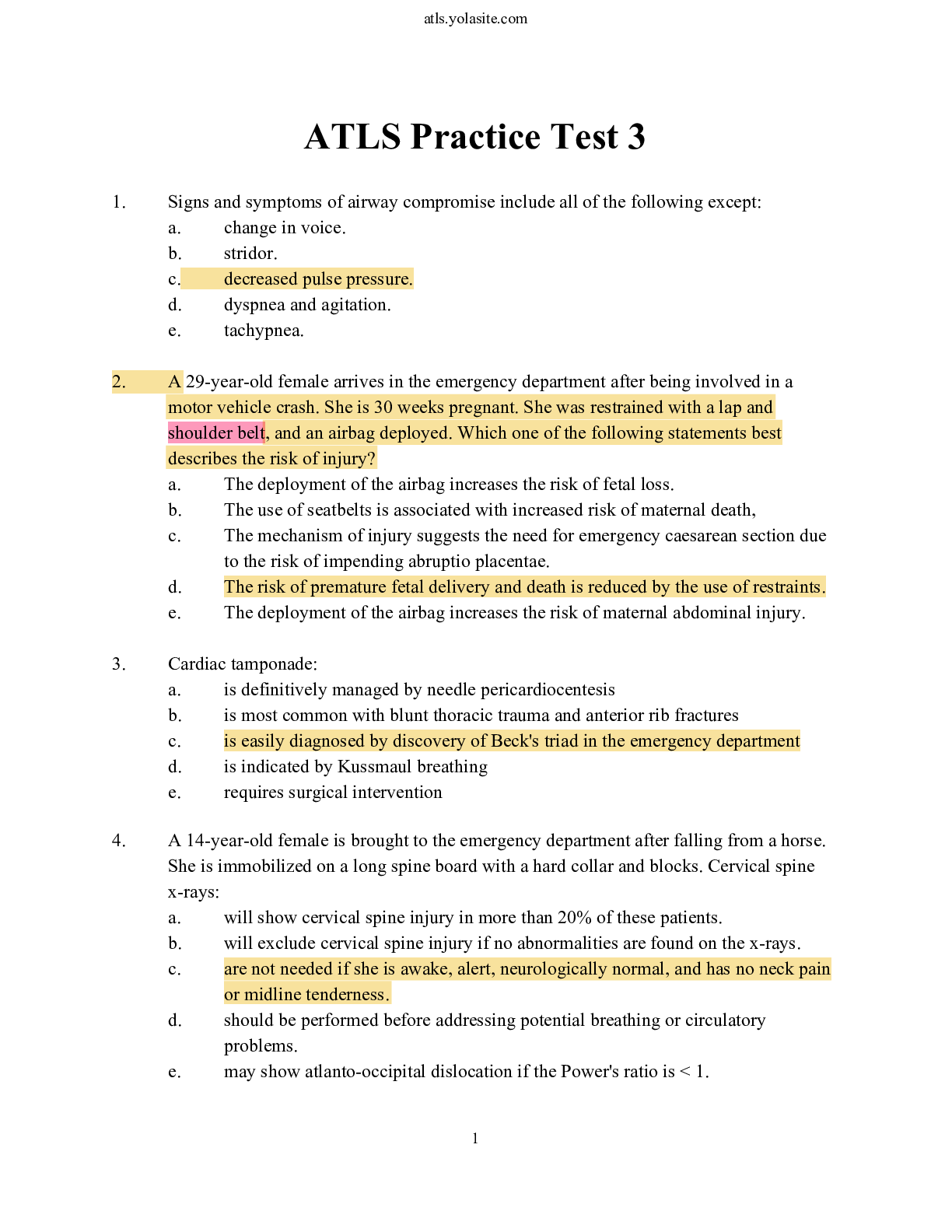
Reviews( 0 )
Document information
Connected school, study & course
About the document
Uploaded On
Aug 10, 2022
Number of pages
10
Written in
Additional information
This document has been written for:
Uploaded
Aug 10, 2022
Downloads
0
Views
26

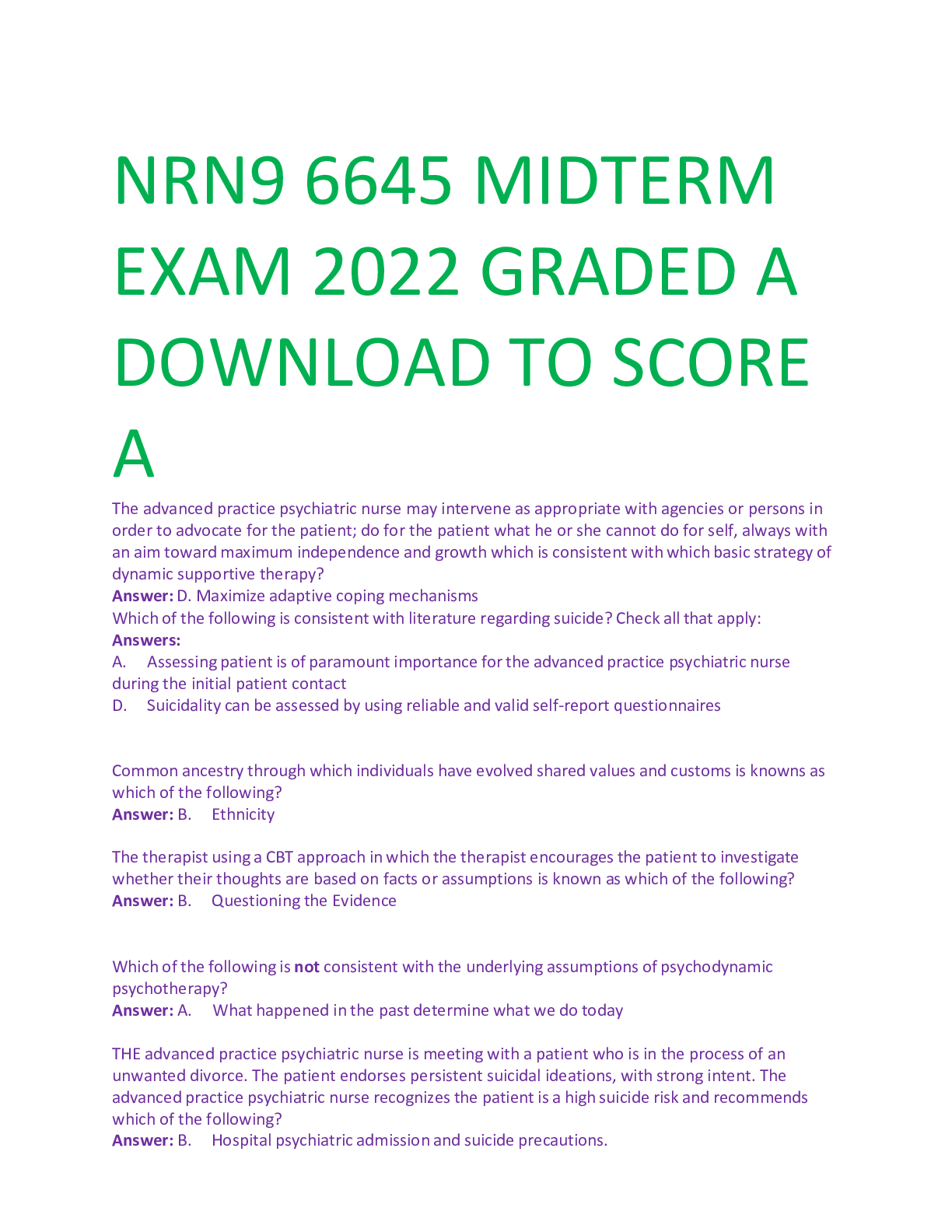

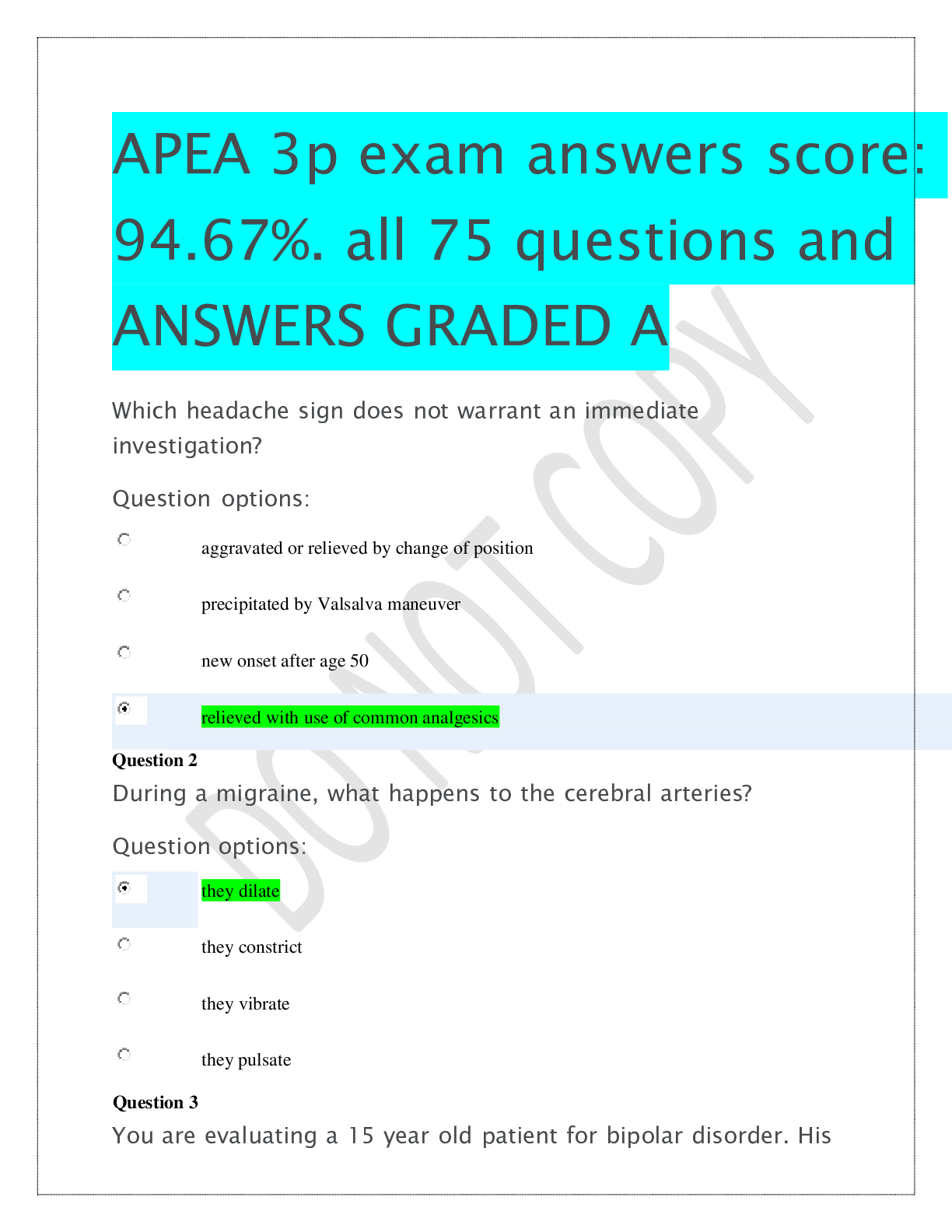
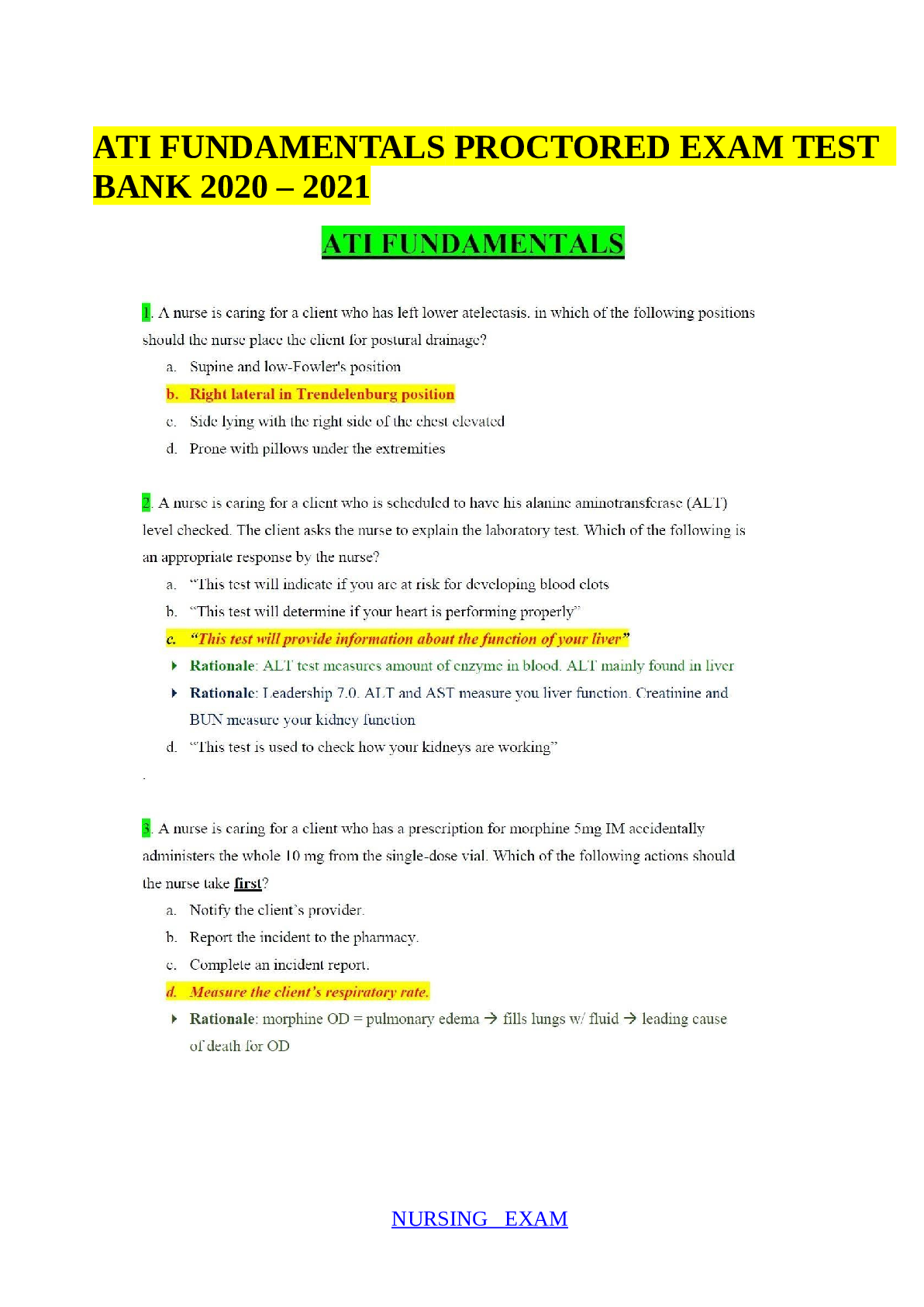
.png)
.png)


